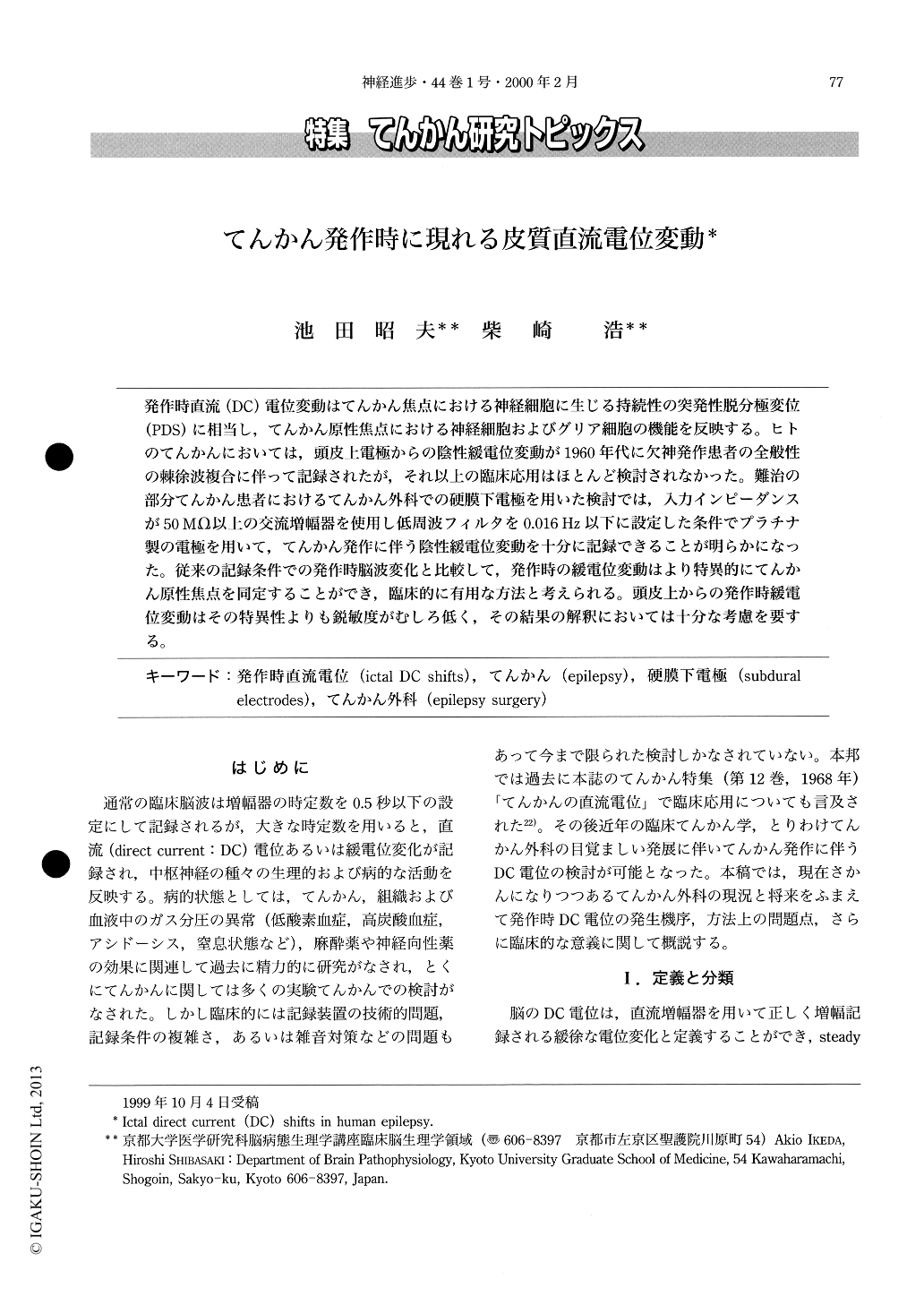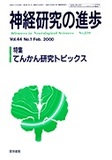Japanese
English
- 有料閲覧
- Abstract 文献概要
- 1ページ目 Look Inside
発作時直流(DC)電位変動はてんかん焦点における神経細胞に生じる持続性の突発性脱分極変位(PDS)に相当し,てんかん原性焦点における神経細胞およびグリア細胞の機能を反映する。ヒトのてんかんにおいては,頭皮上電極からの陰性緩電位変動が1960年代に欠神発作患者の全般性の棘徐波複合に伴って記録されたが,それ以上の臨床応用はほとんど検討されなかった。難治の部分てんかん患者におけるてんかん外科での硬膜下電極を用いた検討では,入力インピーダンスが50MΩ以上の交流増幅器を使用し低周波フィルタを0.016 Hz以下に設定した条件でプラチナ製の電極を用いて,てんかん発作に伴う陰性緩電位変動を十分に記録できることが明らかになった。従来の記録条件での発作時脳波変化と比較して,発作時の緩電位変動はより特異的にてんかん原性焦点を同定することができ,臨床的に有用な方法と考えられる。頭皮上からの発作時緩電位変動はその特異性よりも鋭敏度がむしろ低く,その結果の解釈においては十分な考慮を要する。
Ictal DC potentials represent sustained paroxysmal depolarization shifts (PDSs) occurring in epileptic neurons, and thus reflect the nature of the neurons and adjacent glial cells in the epileptogenic area. In human epilepsy, scalp-recorded slow negative shifts were demonstrated in association with spikes and wave complexes in patients with petit mal, but little clinical application has been done so far.When subdurally recorded in patients with intractable partial epilepsy, negative shifts were observed by currently available equipment : platinum electrodes using AC amplifier with a very high input impedance ( >50 MΩ) and opened low frequency filter (<0.016 Hz). The recorded slow cortical potentials can aid to delineate an epileptogenic area more precisely, providing an additional information to the conventional ictal EEG findings. Usefulness of subdurally recorded DC potentials in clinical epileptology is to be studied further. Scalp-recorded ictal DC shifts have the lower sensitivity, which is to be taken into account.

Copyright © 2000, Igaku-Shoin Ltd. All rights reserved.


